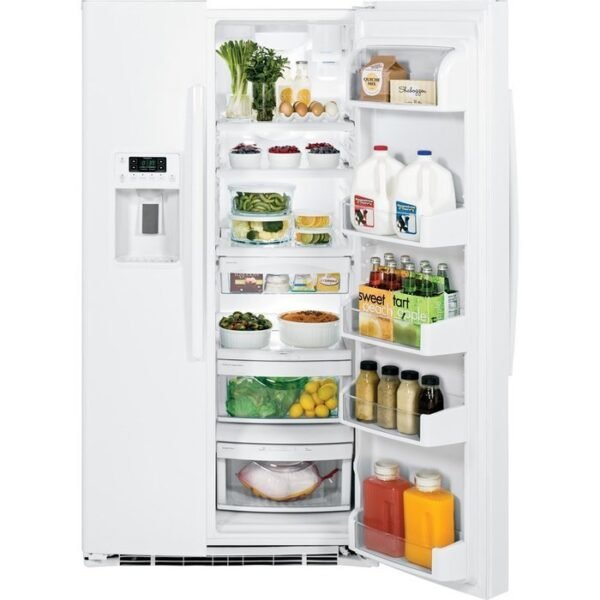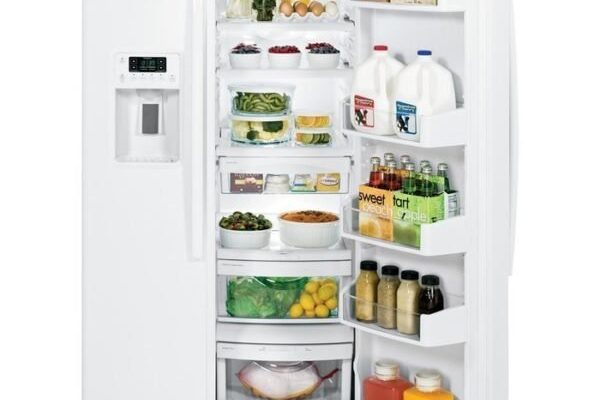
First things first, when your GE refrigerator throws up an E3 error code, it’s essentially the appliance’s way of communicating that the defrost system might have a hiccup. Imagine your refrigerator’s defrost system like a diligent little worker that prevents ice from building up inside, which could otherwise turn your fridge into an icy cave. When this system falters, the E3 error code pops up as a cry for help. But will a simple reset work like a magic wand here? Let’s figure that out!
Understanding Error Code E3 on Your GE Refrigerator
Before we jump into solutions, it’s crucial to understand what error code E3 is signaling. In the simplest terms, an E3 error suggests that your refrigerator’s defrost system isn’t working properly. This issue usually ties back to one of the components in the defrost system, such as the defrost heater, the defrost thermostat, or the defrost timer. Imagine if one of these components is a cog in a wheel – if one cog isn’t turning, the wheel stops working efficiently.
The defrost heater’s job is to melt any ice or frost that starts to build up on your refrigerator coils. You might think of it as a tiny space heater dedicated to keeping your fridge frost-free. If this heater isn’t functioning, ice can start to accumulate, leading to cooling inefficiencies. Likewise, the defrost thermostat acts like a watchdog that senses the temperature and triggers the heater. If it fails, the whole defrost cycle might be thrown off.
So, when the E3 code appears, it’s key to realize that you’re being alerted to check these vital components. While resetting can work temporarily, it doesn’t address the underlying issue — much like hitting snooze on an alarm clock doesn’t change the time you need to get up. Understanding this code is just the first step to keeping your refrigerator running smoothly.
Can Resetting Solve the Problem?
Here’s the deal: resetting your fridge is a bit like giving it a quick nap to recharge. You might have heard of the trusty “turn it off and on again” strategy, right? It can sometimes resolve minor glitches. But for error code E3, resetting is a temporary fix, not a solution to the root cause. Think of it as a bandaid – it might conceal the problem briefly, but it doesn’t heal it.
Resetting your GE refrigerator to clear the E3 error can involve simply unplugging it from the power source for about 30 minutes. This allows the appliance to reset its systems. Upon plugging it back in, the error might disappear briefly. However, if the E3 code stems from an issue like a malfunctioning defrost heater, the code will likely return soon after because the original issue hasn’t been corrected.
Moreover, frequent resetting without addressing the real issue might put extra stress on your refrigerator’s components over time. It’s like trying to ignore a leak in your roof by just emptying the bucket each time it rains — not a sustainable long-term strategy. Instead, a reset should be viewed as a temporary measure while you diagnose or wait to repair the actual problem.
Next Steps: Diagnosing and Fixing the E3 Code Permanently
So, if resetting isn’t a permanent fix, what are your options? The first step is to pinpoint which component in the defrost system is causing the problem. You might need to dig a little deeper into the mechanisms or seek professional help if you’re unsure. Checking the defrost heater and thermostat for continuity with a multimeter can help determine if one of these parts is faulty. Remember, this is a bit like being a detective; you’re searching for clues to solve the mystery.
Replacing faulty components can often clear up the E3 error code for good. Getting a certified technician might be the best route if you’re not comfortable tinkering with appliance electronics. They can assess the components comprehensively and ensure your refrigerator is back to peak performance in no time. And let’s be honest, having peace of mind knowing your appliance is in expert hands can save you from potential headaches and mishaps.
In some cases, if the problem persists despite repairs, it might be worth considering the age and efficiency of your refrigerator. Like an old car, there comes a point where repairs are less economical than investing in a newer model. Evaluating the cost of repairs against the benefits of modern appliances could be your next step.
Preventative Tips for Future Troubles
Now that you have a grasp on tackling the E3 error, let’s chat about preventing it from appearing again. Keeping your refrigerator in good shape is akin to maintaining a car with regular oil changes and check-ups. Regularly cleaning and defrosting your appliance can prevent undue stress on the defrost system. A good rule of thumb is to give your fridge some love by checking for unusual frost build-up and ensuring vents and coils are clear.
Additionally, it’s helpful to avoid overloading your refrigerator, which can block air circulation and lead to cooling issues. Remember, a well-organized fridge is a happy fridge! It keeps things running efficiently and reduces the risk of component strain. And if you find yourself repeatedly facing error codes, it might be time to consider a service check-up, just as you would for other household systems.
In a nutshell, while resetting your GE refrigerator might provide a brief respite from the E3 error code, tackling the actual problem is key for long-term relief. Understanding what the code means, diagnosing the issue, and taking preventive measures will keep your refrigerator — and your kitchen routine — running smoothly.
